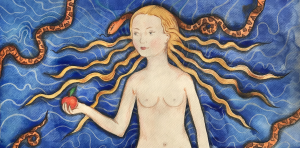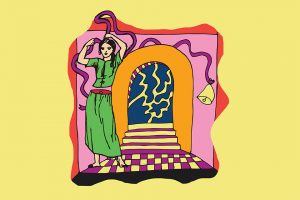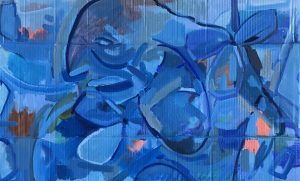
Unfair and Lovely: Exploring the World of Skin Lightening
by Priya Vempali | January 6, 2018
Most girls have fond memories of sneaking into their parents’ room, aged 6 or 7, to play with their mother’s makeup. You could barely reach the dressing table, but once you’d climbed onto a stack of books, you just about managed to reach her fancy red lipstick. You inspected your new plaything: a symbol of beauty even within its packaging, you took time to feel the smooth, metallic bullet between your shaky fingertips. Breath held, palms sweaty with equal parts excitement and uncertainty, you uncovered the bounty from its sheath and, looking intensely in the mirror, applied careful red lines over your lips, concentrating as hard as you could. This is, for many people, is a crucial moment in their evolution of self-expression. Before all of the social expectations, beauty standards and crippling self-doubt kick in, you are entranced within a single, magical moment of artistic creation: your first attempt at putting on makeup.
Unfortunately, I never experienced this kind of innocent bliss. A curious child, my first venture into the world of cosmetics was met by an altogether more sinister creature. Rummaging through my parents’ cupboard, I dove headfirst into the novelty world of glamour, making sure to leave no bottle or box unturned. After some time, I clasped my palm around an unfamiliar tube. The smooth, white packaging was decorated with a beautiful light pink script, which read the words: ‘Fair & Lovely…Advanced Multivitamin Formula, Expert Fairness Solution’. Underneath the slogan was an image of a beautiful, light-skinned woman, smiling knowingly as though she had found the secret to all of life’s questions. Behind her, like a shadow, was an outline of her former self: dark, dull and despairing. I looked at the picture, and then at my own chocolate coloured skin, which was an even darker hue than the woman’s ‘before’ image. I wondered whether I should apply a thin layer of the product to my skin, if covering myself in cream would make me fair and lovely like the pretty woman on the tube. Thankfully, the sound of my mother calling me down for dinner broke the spell, and I ran to the kitchen, away from the pretty lady with pale skin and a dark shadow. As I sat eating my curry and rice, looking up at my mother, whose skin was already so much lighter than my own, I wondered whether this was the secret to beauty and, by extension, happiness. Would lighter skin make me a better person?
As I grew up, I realised that the answer was, of course, no. I learned to love my complexion, so much darker than that of my female family members, because it was what made me unique. I may not be as light as everyone else, but their skin didn’t glisten like gold in the sun as mine did, which was something, at least. As a teenager, I found that all the powders being sold as ‘dream sun…beach glow…bronze goddess’ were an almost perfect replication of my natural skin colour. Submerged within a society of pale-skinned people dressing themselves up in complexions like mine, the aesthetic virtues of my native hue crystallised in my adolescent mind, as I began to identify with the melanin flooding my cells.
If I had grown up in India, this would have been a very different story. Even on holidays there, when my mother and I would sneak away for a spa treatment, aestheticians were quick to inform me of my need for a ‘brightening’ facial. Lying there in a strange room, with a strange woman layering some strange products on my face, I could feel my skin burning and smell the stink of fumes as she penetrated my epidermis with chemicals. Once the ‘treatment’ was finished, I looked in the mirror and saw a brighter, lighter version of myself smiling back at me. The next day, my skin started peeling, and was so sensitive that I couldn’t even apply moisturiser without wincing in pain.
The prevalence of skin lightening in India, and Asia more generally, is so normalised that women, men, even children, are willing to put themselves through pain, to burn through layers of skin, to reflect the images of beauty which have been fed to them since birth. Little girls have internalised the message their mothers used to call to them when they were playing on the street: “Come inside, you’ve been out too long, your face will darken.” These same little girls become teenagers, and watch their favourite Bollywood starlets smile joyfully, bottle in hand, as they espouse the benefits of a super-strength whitening cream. They become mothers, have children, and somehow, without even realising, begin to adopt the same voice as their own mother, lecturing their children on staying out of the sun. The cycle continues.
“It’s simply an aesthetic preference,” companies argue, as they continue to dig their claws deeper into the psyche of the Indian people. Disregarding the long-term skin damage that the cream’s ingredients (hydroquinone, mercury and steroids) can cause, the normalisation of these products reveals a fundamental flaw in our societies’ beauty standards, which companies like Fair & Lovely exploit. In a society where appearances are everything, any amount of pain or long-term damage is worth it for the superficial joy of a paler complexion. This is because we are not just being sold fair skin, we are being sold the virtues which go along with a paler complexion: beauty, success, happiness.
India’s history is long and incredibly complex, marked by frequent foreign invasions, caste-based discrimination and a colonial imprint that remains indelible within the nation’s consciousness. The subjugation of the Dravidian people by Aryans, Turks and Europeans embedded a wide-reaching racial complex within Indian society, whereby generations of Indians came to associate the lighter skin colour of other races with the political power they have wielded. The seeds of colourist behaviour were sown over the centuries, and came to fruition in mere decades through the dedicated nurturing of cosmetic companies, who were more than happy to sustain archaic notions of pale skin as socially, culturally and even morally dominant. The continued prevalence of these products within India is emblematic of a society still haunted by the value systems of its colonial past, when beauty was epitomised by the white woman. As long as Indians living at home and abroad continue to be sold the message of their own aesthetic inferiority, they will continue to contort themselves into images of Caucasian beauty.
Artwork by: Sanaa Asim




